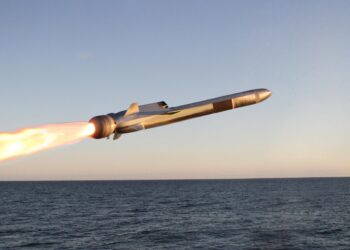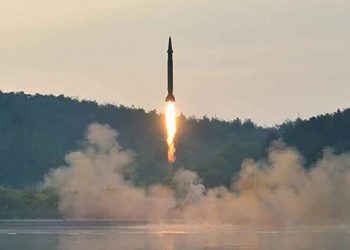Associated Press,
The USS Lake Erie is the only ship that has ever shot an interceptor into space and knocked out a midrange missile.
But over the next three years, 18 ships in the U.S. Pacific Fleet will be equipped with the same technology.
The rapid rollout is an example of how the military is installing nascent technology around the Pacific Rim that is making missile defense a reality some two decades after talk about “Star Wars” systems began.
Ten Pacific Fleet destroyers already are equipped to track intercontinental ballistic missiles, including some that patrol the Sea of Japan for any missiles that might be fired from North Korea.
Earlier this month, the military installed new interceptors in underground silos in Alaska and California.
Early next year, a new high-powered missile-tracking radar is scheduled to arrive at its a base in the Aleutian Islands. A similar radar may later be installed in northern Japan in cooperation with Tokyo.
“We're making very good progress in ballistic missile defense,” said Adm. Gary Roughead, the commander of the U.S. Pacific Fleet, in a recent interview at his Pearl Harbor headquarters. “We have made real good progress in the tracking and search piece. And we have that capability out and about. And we've made very, very good progress in the testing of the interceptor.”
The military will get a big boost from the $900 million sea-based X-band radar the military plans to base at Adak, a tiny Alaskan outpost halfway between Tokyo and Seattle.
The radar is so powerful it can identify baseball-sized objects from thousands of miles away.
In Alaska, it will be expected to tell the difference between decoys and real missile warheads, a key capability if the ballistic missile defense network ever expects to outsmart an assault designed to confuse and to knock out the most deadly payloads.
The Missile Defense Agency also installed its 10th ground-based interceptor into an underground silo in Fort Greely, Alaska, earlier this month. Eight of the missiles are now in Alaska, while two others sit at Vandenberg Air Force Base in California.
The military plans to create a larger, faster version of the missile the Lake Erie fired during its test last month so that ships will be able to shoot down longer-range targets.
Doubters say, however, that the technology for the system's interceptors, those aboard ships and those in underground silos, are not yet ripe to be used in the field.
Phil Coyle, who served as the chief Pentagon weapons tester under President Clinton, said interceptor tests so far have only been conducted under highly scripted circumstances. As a result, he said, it is unrealistic to expect that they would perform as well in a real attack.
“While the Aegis system might get lucky, you would have to expect that if a country like North Korea had more than one missile, that one would get through,” Coyle said.
David Wright, co-director of the Global Security Program at the Union of Concerned Scientists, said adversaries could deploy decoys, or disguise a warhead to look like a decoy to confuse U.S. sensors.
They also could change the temperature of a fake warhead so it wouldn't show up on radar looking like a live warhead.
Backers of the program say the high-priced defense system provides protection against “rouge states” who would threaten the United States with long-range missiles, some that could reach Hawai'i, or the possibility of missiles topped with nuclear, chemical or biological weapons.









